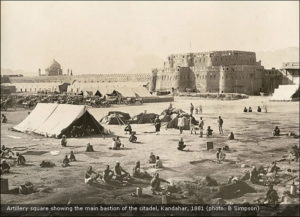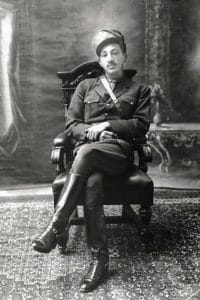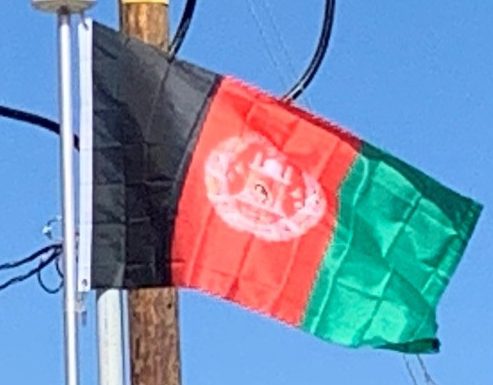
After the Third Anglo-Afghan War and the signing of the Treaty of Rawalpindi on 19 August 1919, King Amanullah Khan declared Afghanistan a sovereign and fully independent state. He moved to end his country’s traditional isolation by establishing diplomatic relations with the international community and, following a 1927–28 tour of Europe and Turkey, introduced several reforms intended to modernize his nation. A key force behind these reforms was Mahmud Tarzi, an ardent supporter of the education of women. He fought for Article 68 of Afghanistan’s 1923 constitution, which made elementary education compulsory. The institution of slavery was abolished in 1923.
Some of the reforms that were actually put in place, such as the abolition of the traditional burqa for women and the opening of a number of co-educational schools, quickly alienated many tribal and religious leaders. Faced with overwhelming armed opposition, Amanullah Khan was forced to abdicate in January 1929 after Kabul fell to rebel forces led by Habibullah Kalakani. Prince Mohammed Nadir Shah, Amanullah’s cousin, in turn defeated and killed Kalakani in November 1929, and was declared King Nadir Shah. He abandoned the reforms of Amanullah Khan in favor of a more gradual approach to modernisation but was assassinated in 1933 by Abdul Khaliq, a fifteen-year-old Hazara student.
Mohammed Zahir Shah, Nadir Shah’s 19-year-old son, succeeded to the throne and reigned from 1933 to 1973. Until 1946, Zahir Shah ruled with the assistance of his uncle, who held the post of Prime Minister and continued the policies of Nadir Shah. Another of Zahir Shah’s uncles, Shah Mahmud Khan, became Prime Minister in 1946 and began an experiment allowing greater political freedom, but reversed the policy when it went further than he expected. He was replaced in 1953 by Mohammed Daoud Khan, the king’s cousin and brother-in-law. Daoud Khan sought a closer relationship with the Soviet Union and a more distant one towards Pakistan.

The King built close relationships with the Axis powers in the 1930s – but Afghanistan remained neutral and was neither a participant in World War II nor aligned with either power bloc in the Cold War thereafter. However, it was a beneficiary of the latter rivalry as both the Soviet Union and the United States vied for influence by building Afghanistan’s main highways, airports, and other vital infrastructure. On per capita basis, Afghanistan received more Soviet development aid than any other country. Afghanistan had therefore good relations with both Cold War enemies. In 1973, while King Zahir Shah was on an official overseas visit, Daoud Khan launched a bloodless coup and became the first President of Afghanistan, abolishing the monarchy. In the meantime, Zulfikar Ali Bhutto got neighboring Pakistan involved in Afghanistan. Some experts suggest that Bhutto paved the way for the April 1978 Saur Revolution.
PDPA Coup d’Etat and Soviet War:
In April 1978, the People’s Democratic Party of Afghanistan (PDPA) seized power in the Saur Revolution, a coup d’état against then-President Mohammed Daoud Khan. The PDPA declared the establishment of the Democratic Republic of Afghanistan, with its first President named as Nur Muhammad Taraki.
